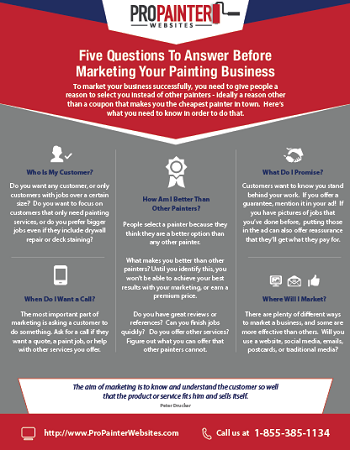Explore The Effect Of Seasonal Elements On The Efficiency Of Commercial External Painting And Recognize The Optimum Times To Attain Long-Lasting Outcomes For Your Project
Explore The Effect Of Seasonal Elements On The Efficiency Of Commercial External Painting And Recognize The Optimum Times To Attain Long-Lasting Outcomes For Your Project
Blog Article
Author-Leach Urquhart
When you're planning a commercial exterior painting job, seasonal variables can make or break your outcomes. You'll wish to consider how temperature level and moisture impact paint application and drying times. Choosing the appropriate season can ensure your paint sticks effectively and lasts much longer. But which seasons are truly the best for this type of work? Allow's check out the key elements that can affect your task's success.
The Influence of Temperature on Paint Application
When you're preparing a business external paint project, the temperature can substantially impact just how well the paint sticks and dries.
Ideally, you want to repaint when temperatures vary between 50 ° F and 85 ° F. If it's too chilly, the paint may not cure properly, resulting in concerns like peeling or fracturing.
On the other side, if it's also warm, the paint can dry also rapidly, protecting against appropriate adhesion and leading to an uneven coating.
painters mn should additionally think about the moment of day; early morning or late afternoon uses cooler temperatures, which can be extra beneficial.
Always check the supplier's recommendations for the specific paint you're utilizing, as they often offer assistance on the ideal temperature level array for optimum outcomes.
Humidity and Its Effect on Drying Times
Temperature level isn't the only environmental variable that affects your business exterior painting task; moisture plays a significant duty too. High humidity levels can slow down drying times significantly, influencing the total top quality of your paint task.
When the air is filled with moisture, the paint takes longer to heal, which can result in issues like bad attachment and a higher risk of mold development. If you're painting on an especially moist day, be prepared for extensive wait times in between layers.
It's critical to check neighborhood weather and strategy accordingly. Ideally, go for humidity degrees between 40% and 70% for optimum drying out.
Keeping these consider mind ensures your job remains on track and provides a lasting surface.
Best Seasons for Commercial Exterior Painting Projects
What's the most effective time of year for your business outside painting jobs?
Spring and very early autumn are typically your best bets. During these periods, temperatures are light, and moisture degrees are usually reduced, producing ideal conditions for paint application and drying out.
Avoid summer's intense heat, which can trigger paint to dry too promptly, causing poor bond and finish. In a similar way, winter months's chilly temperatures can hinder proper drying and healing, risking the longevity of your paint work.
Aim for days with temperatures in between 50 ° F and 85 ° F for optimal outcomes. Keep in mind to examine the local weather forecast for rainfall, as wet problems can wreck your job.
Planning around these elements ensures your painting project runs efficiently and lasts much longer.
Conclusion
Finally, planning your commercial exterior painting tasks around seasonal factors to consider can make a considerable difference in the end result. By organizing see this website during the perfect temperature levels and moisture degrees, you'll make sure better adhesion and drying times. Keep in house painters to watch on regional weather prediction and choose the right time of year-- springtime and very early loss are your best bets. Taking these actions will certainly help you accomplish a durable and professional surface that lasts.
